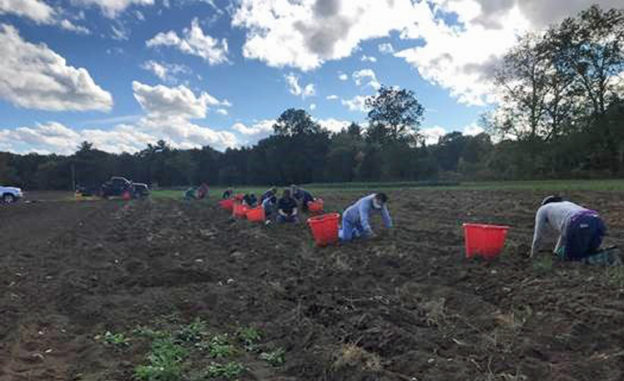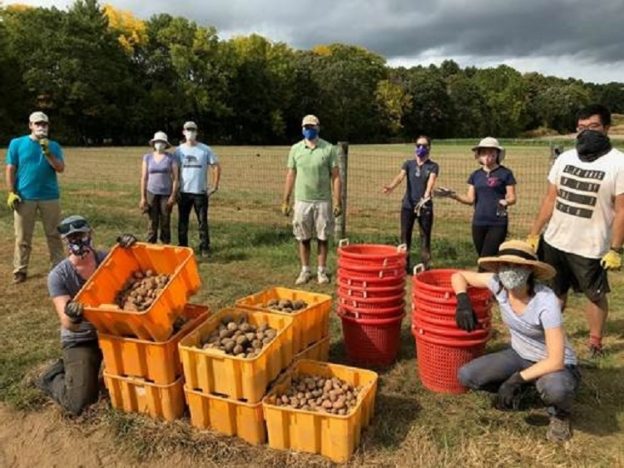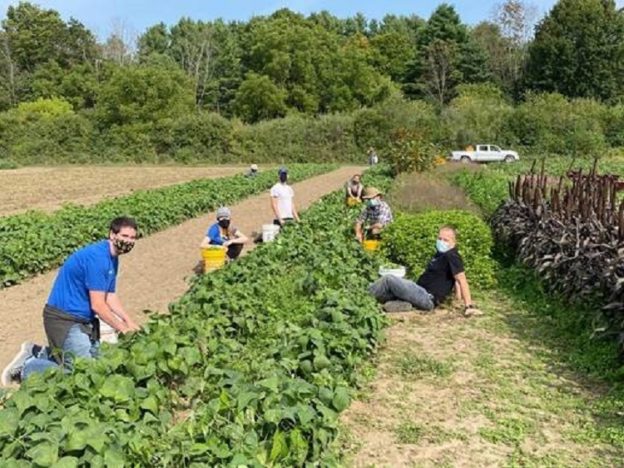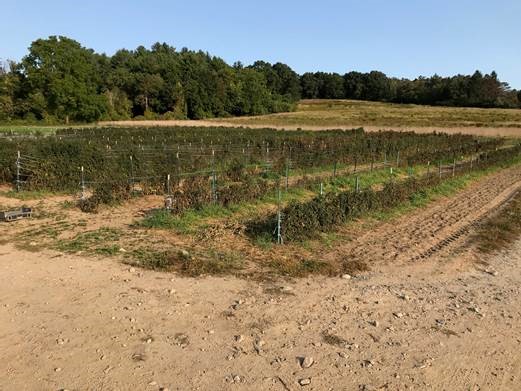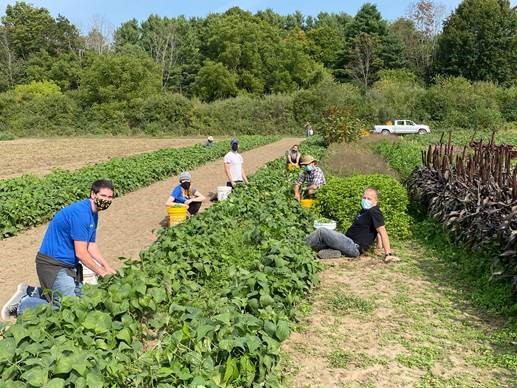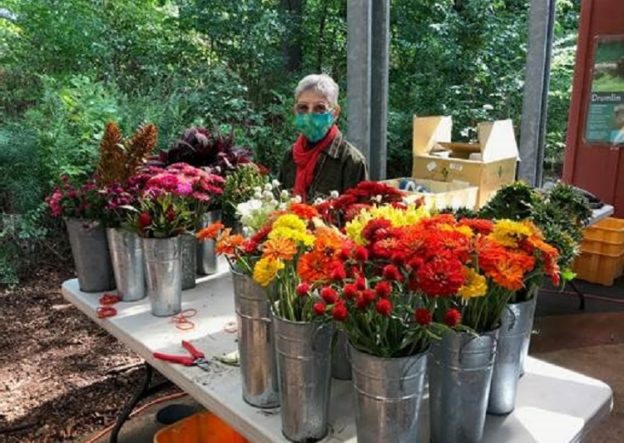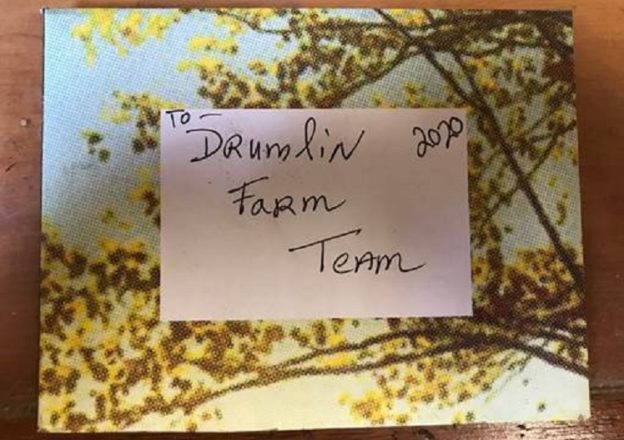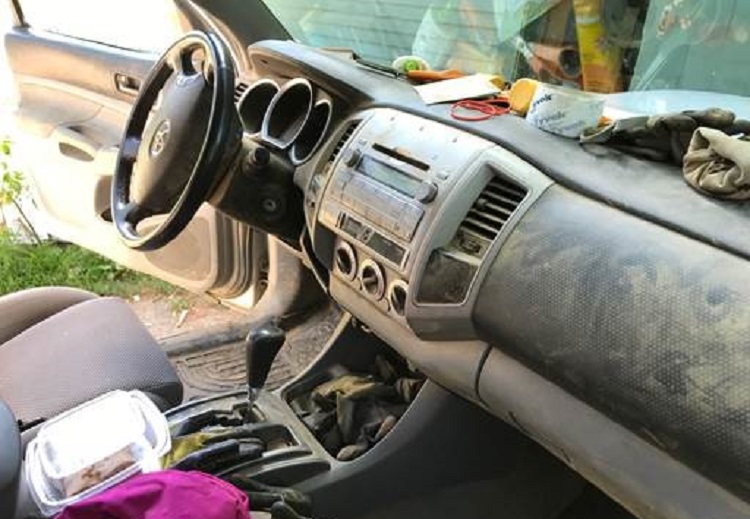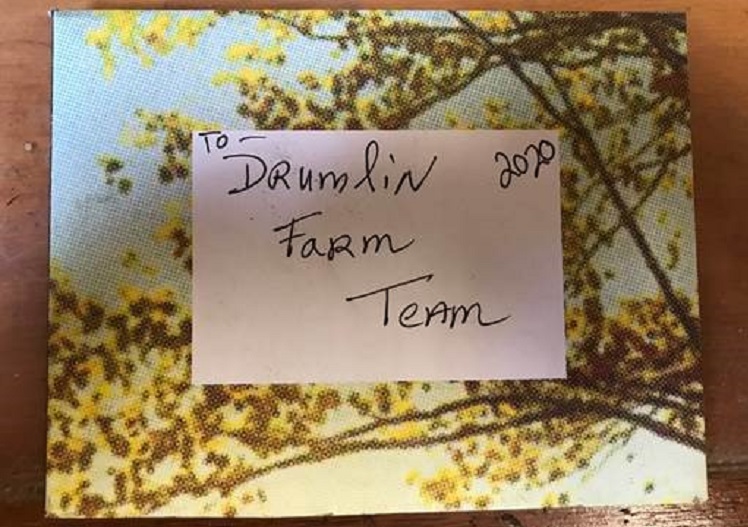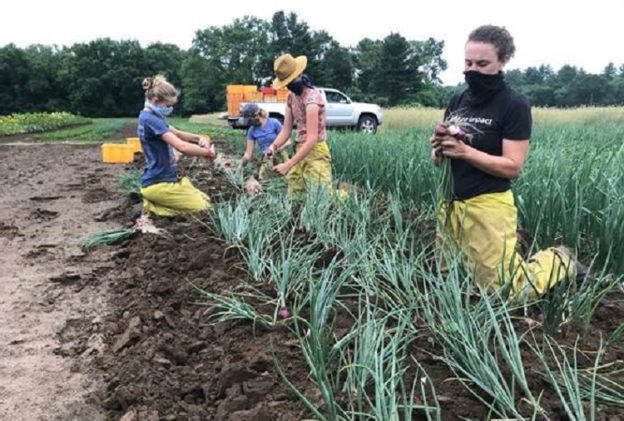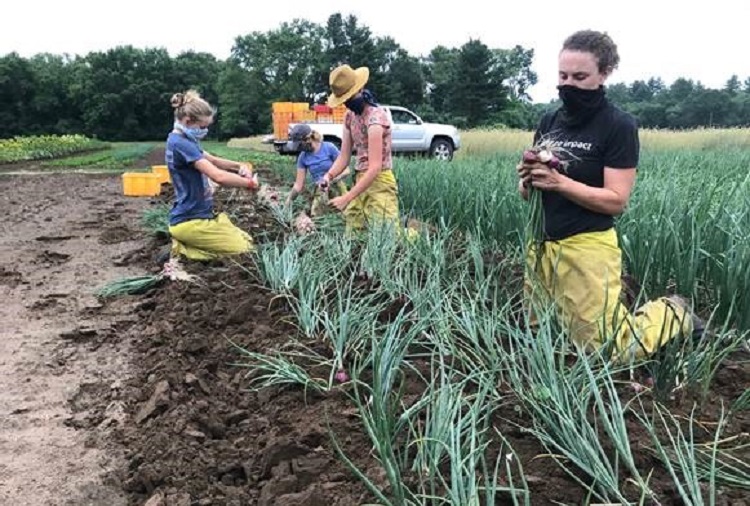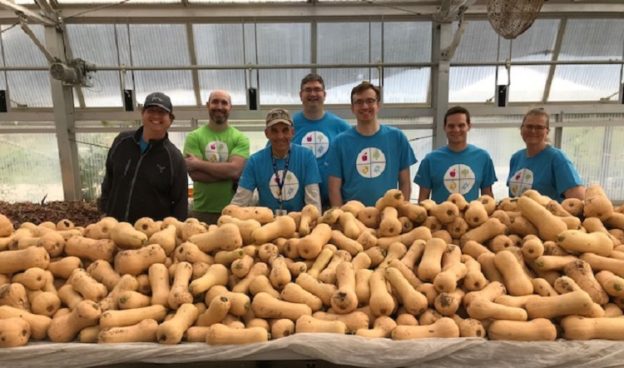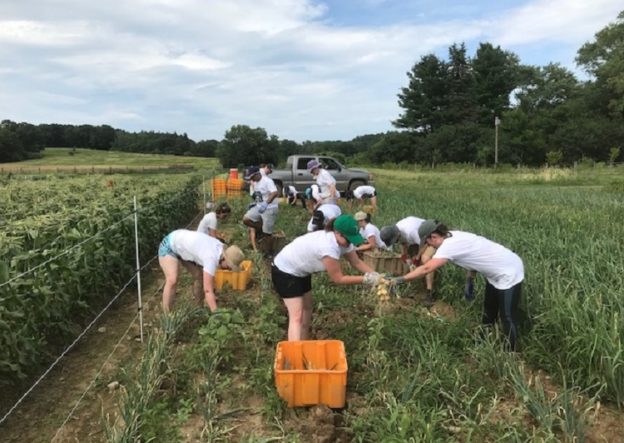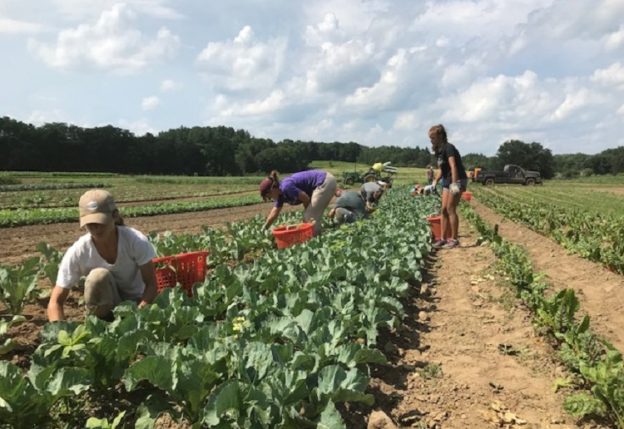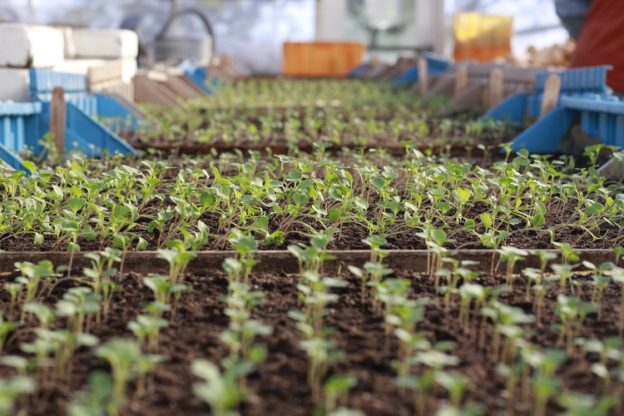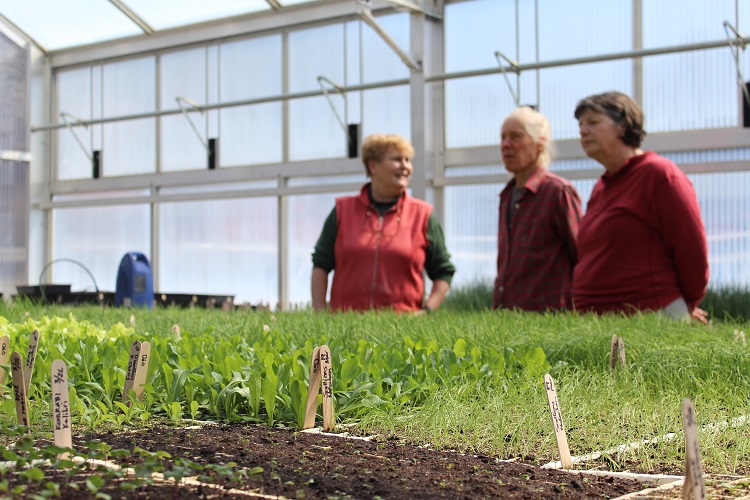This past Thursday, we dug the last potato of 2020! Ten volunteers from Astra Zeneca helped move us toward the potato harvest finish line on Wednesday afternoon. The group started apart, some harvesting 200 pounds of storage turnips, while others pulled up the last of the tomato stakes. Then, we all met and together dug 600 pounds of potatoes. Astra Zeneca sent volunteers to the farm last summer during the garlic harvest, and some in this year’s group were reminiscing about how many days it took for the smell of garlic to entirely leave their cars following the commute home after an afternoon spent on that fragrant job! They must not have minded too much as they came back and did great work once again.
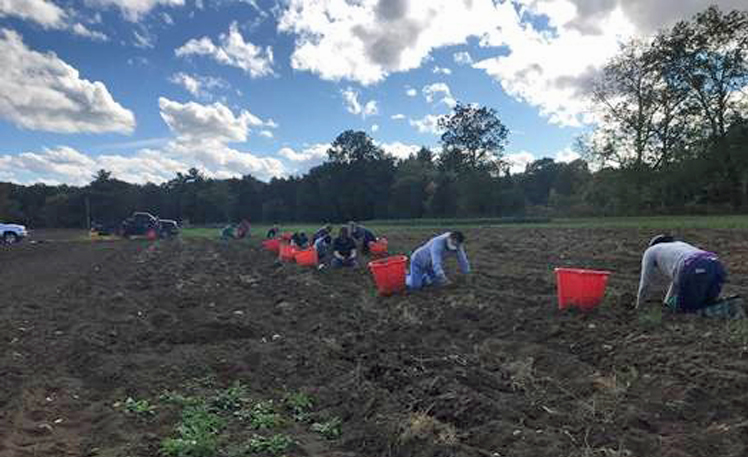
In the week ahead, we’ll continue harvesting storage crops into the root cellar. Each fall, volunteer Fred reprograms the motherboard controlling the root cellar fan and AC unit to make best use of cold night air to lower the room’s temperature. Our goal is to get the hyper-insulated cellar to 40 degrees as quickly as possible using the least amount of electricity. The more cold night air we can fan into the room, the less we need to run the AC. We start by grabbing 50-degree air, then step that value down as the room cools. Eventually, we’ll target only 35 degree and colder air to maintain the room near 40. Thanks Fred for all the time spent tapping at the keyboard and monitoring the gauges.
As the nights get colder, we’ve protected the chard and last planting of lettuce with winter-weight coverings. On Friday afternoon, the team secured the covers around the obstacle course of deer fences. Nice work all! The poles and twine were already in place to keep the deer off the greens, and we decided to leave them there to prevent the deer from walking across the expensive covers and cutting them with their sharp hooves. But then the wind twice lifted one of the covers, and we had to remove the hoops to lower that cover’s profile (pictured above). The purpose of the hoops is to keep the frost above the crop. We’re now hoping that the cover is thick enough so that when a light frost settles on it, the leaves pressed against it from below won’t get burned. While we worry about the greens, day after day volunteer Anne has been returning to the last planting of shelling beans to pick those that continue to ripen. Thanks to Anne’s persistence, Jill and Margaret brought fifty pounds of those beans to market, and then donated any that didn’t sell to Food for Free.
Talulla, one of the restaurants we deliver to each week, recently catered boxed lunches for a group that gathered at Drumlin Farm. The chefs included the following note in each box, and their words provide another illustration of how our community sustains this farm, and vice versa.
To Our Guests,
Talulla is a small, family-operated, Mom and Pop restaurant for which our daughter is the namesake. A connection to our farmers and their ingredients is a core value in our business. We love Drumlin Farm because they are more than just a farm to source ingredients: they are an extension of our family; from the farmers that deliver our produce each day, to the staff at the farm who helped organize our daughter’s Birthday Party last year. We support each other because we both believe in the importance of operating on a smaller and more local scale. At our restaurant, about 90% of the produce we use is sourced from Drumlin Farm. We hope you enjoy the ingredients of your basket. As many products as possible are sourced from Drumlin Farm.
Xo,
Danielle & Conor
We hope to see you picking up a farmshare box, walking the trails, or connecting with us on social media. Happy Harvests!
Your Farmers


